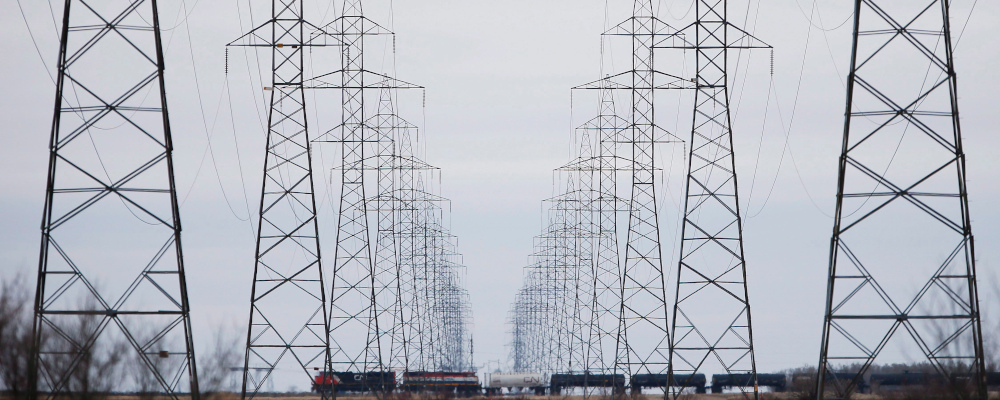In 1905, Sir Adam Beck, (who created the precursor to Ontario Hydro), spoke in the Ontario Legislature about the “very great influence upon the commercial development of the Province [that] will be exercised by the furnishing of cheap power.”
In the time since, cheap power has been the backbone of the prosperity Canada achieved. Fed mostly from large hydroelectric dams, this cut-rate, abundant supply of electricity enabled mass electrification and quality of life soared. Today, we continue to reap the benefits and have a reliable, largely non-emitting grid that is the envy of the world.
But the demands on our grids are in danger of outstripping our ability to supply them. Ontario is racing to build new nuclear plants safely in order to meet expected demand by 2029 while filling interim demand with new gas plants and a new call for renewables, Quebec is spending up to $185 billion to solidify provincial supply amidst rising demand both in- and out-of-province, and British Columbia is filling a projected 15 percent increase in demand by 2030 with the first acquisition of new generation sources in 15 years. Even Manitoba, a province with abundant and previously boundless supplies of cheap hydroelectricity, is now projecting a deficit by 2029 and is being forced to restrict access to potential new businesses due to supply shortages.

To solve the constraints on energy generation and to meet net-zero 2050 targets, the federal government projects that grid demand will be twice that of today by 2050. To meet that rising demand, the output of the grid, which we have accumulated since we have had electricity—roughly the past 140 years—will have to double in the next 26 years.
It’s worth emphasizing this point: if Ottawa’s projections are right, we’ll need to essentially build out the equivalent of today’s electricity supply in less than one-fifth of the time in the face of modern environmental regulations, Indigenous and local consultations, and other bureaucratic processes that invariably slow down the construction of major infrastructure.
Canada’s electricity has been so abundant that we have grown used to reaping the benefits, including those seen by exporting major amounts of electricity to the United States. From these largely silent exports, we garner billions of dollars annually and saw record profits in 2022.
Without sufficient surplus to export, these previously reliable financial windfalls will dry up and the provincial ratepayers will face higher costs, while governments who were using these funds to underwrite lower taxes or expanded services may have to re-evaluate. Past yearly trends have shown reductions in total exports, despite continued profits. But the crunch is getting so bad that Quebec, long a source of seemingly limitless electricity, is facing shortages by 2027. U.S. states that have based their decarbonization on Quebec imports are increasingly fearful that agreements will fall through.
The electricity grid is one of our most complex creations, providing power at any point along the gamut from vast industrial steel mills to the most minute individual demands. Large-scale changes can occur, although time is required to ensure that they do not destabilize the delicate balance. Ottawa’s pursuit of more electrification of the Canadian economy is exacerbating the forecasts of supply shortfalls. Although many of the new technologies that will accompany this electrified life will make our lives easier and better, policymakers must recognize that a cheap, abundant supply of electricity must be available. Without it, there is no way we will achieve our objectives.
For example, right now there are conflicting policy signals from Ottawa. It has both mandated that all new vehicle sales be electric by 2035, while also encouraging the expansion of heat pump uptake in homes. Both initiatives face headwinds from the Clean Electricity Regulations, which seek to encourage decarbonization in provincial grids by 2035. Such rapid changes to the electricity grid bring extreme risk. Such risks are not good for reliable electricity supply, and costs from risks taken with the electricity system cannot be avoided if they go wrong. This sloppy policymaking endangers our future electricity supply-demand balance.
Across the country, there is provincial buy-in (even in Alberta and Saskatchewan) for a 2050 net-zero target for electricity grids. Ottawa should take this win, drop the confrontational approach it has now, and seek to build on this progress. The Clean Electricity Regulations should be revoked because they contribute to this confrontation, are politically unnecessary, and do not recognize the unique provincial circumstances.
An incoming Poilievre government can help to fix this shortage by working with the provinces to fund their existing plans. The federal government should take the position that provinces that want to build should be able to. This can be enabled by providing large-scale, cut-rate loans to build new electricity infrastructure, for both generation and transmission capacity. These loans could also feature structuring arrangements wherein the more megawatts the project was to produce or transmit, the less the interest. Such incentives can allow Canadian policymakers to think bigger and unlock megawatts for booming populations and industries. Similarly, if the project was non-emitting, it could be eligible for lower interest rates. By enabling the construction of projects that have made it through the provincial policy gauntlet without overly constricting provincial choices, Ottawa can act constructively.

Aligning with the anti-gatekeeper message, the federal government should activate the Canada Energy Regulator to break down silos in provincial grids by conducting work to pre-authorize new transmission corridors between provinces. The approval of transmission lines can easily take over a decade, while provincial silos in electricity grids promote unnecessarily expensive construction of new generation sources, causing higher consumer costs.
Additionally, with much of our existing transmission capacity created for Canada-U.S. trade, much of our import/export trade does not occur between provinces but instead between provinces and states. Though this is partly due to the higher prices that will be paid in the U.S., with a lack of interprovincial transmission, there are hard, low, thresholds for internal Canadian electricity trade.
For instance, if we look at the three largest electricity exporting provinces in 2022, about 74 percent of British Columbia’s total exports were to the U.S., 63 percent of Quebec’s exports were to the U.S., and 81 percent of Ontario’s total exports were to the U.S. Creating more potential avenues for interprovincial electricity trade by facilitating commercially-viable shovel-ready projects that would have permitting complete would substantially reduce barriers to new construction. With more interprovincial electricity trade capacity, increased future trading of electricity in Canada could become a more likely reality, should there become an economic incentive.
If Canada is to meet the moment and come through the challenges ahead, a more cooperative intergovernmental stance is required. This will see increased construction of generation and transmission, greater interprovincial trade of electricity, greater speed in approvals, and more coherent use of policy to clearly signal economic outcomes.
With this approach, Canada can improve growth and productivity, helping to improve living standards, quality of life, and overall direction of the country. Without these necessary changes, missed emissions reduction commitments from Ottawa and mismanagement of our vaunted electricity sector will be just another marker on the road to decline.
Recommended for You

‘There are consequences to this legislation’: Michael Geist on why the Canada-U.S. digital services tax dustup was a long time coming

Rudyard Griffiths and Sean Speer: The future of news in Canada: A call for rethinking public subsidies

‘You have to meet bullying with counter-bullying’: David Frum on how Canada can push back against Trump’s trade negotiation tactics

Need to Know: Mark Carney’s digital services tax disaster




